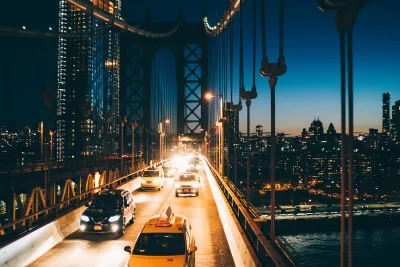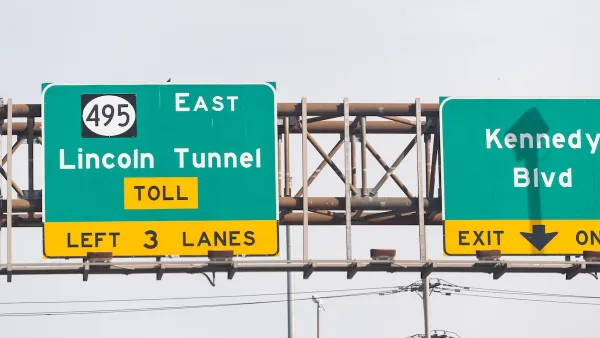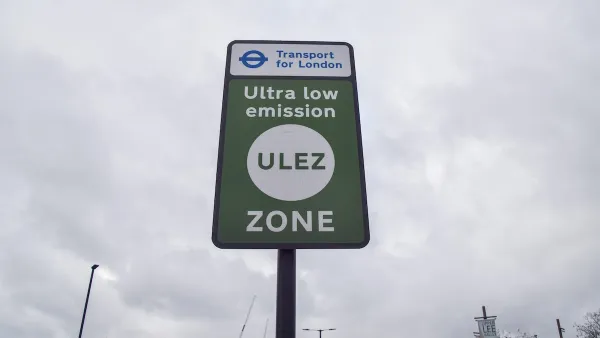The long-awaited congestion pricing program began on January 5.

New York City’s congestion pricing program is now in effect (you can trace the saga of the controversial program on Planetizen’s archives), and Dave Colon of Streetsblog NYC has all the facts you need to know as a, NYC driver or resident.
As Colon explains, “At the most basic level, the toll to drive into the area of Manhattan below 60th Street has a peak period from 5 a.m. to 9 p.m. Monday through Friday, and 9 a.m. to 9 p.m. on Saturday and Sunday. The remaining hours are considered the ‘overnight’ period.”
The cost to enter the congestion pricing zone varies for passenger cars, small trucks and charter buses, tractor trailers, intercity buses and school buses, tour buses, motorcycles, yellow or green cabs, and ride-hailing service vehicles. Costs for passenger vehicles are $2.25 off-peak and $9 at peak hours. Tolls are roughly 50 percent higher for drivers without at E-Z Pass.
Colon reminds readers that the $9 toll was lowered from a proposed $15 rate, and that “The vast majority of people who get into the central business district use transit — and those who drive are, on average, wealthier than their transit-using neighbors.”
Congestion pricing is expected to raise $500 million per year, funds that will go toward public transit in the region. As Colon notes, “In the world of big money borrowing, congestion pricing is a totally separate and new revenue stream from the MTA's normal fare- and toll-backed revenues that the agency has used to pay off its bonds. Congestion pricing is that rarest of things in politics: a reliable revenue stream.”
FULL STORY: Congestion Pricing Has Begun! Here is the ONLY Explainer You Need

National Parks Layoffs Will Cause Communities to Lose Billions
Thousands of essential park workers were laid off this week, just before the busy spring break season.

Retro-silient?: America’s First “Eco-burb,” The Woodlands Turns 50
A master-planned community north of Houston offers lessons on green infrastructure and resilient design, but falls short of its founder’s lofty affordability and walkability goals.

Delivering for America Plan Will Downgrade Mail Service in at Least 49.5 Percent of Zip Codes
Republican and Democrat lawmakers criticize the plan for its disproportionate negative impact on rural communities.

Test News Post 1
This is a summary

Test News Headline 46
Test for the image on the front page.

Balancing Bombs and Butterflies: How the National Guard Protects a Rare Species
The National Guard at Fort Indiantown Gap uses GIS technology and land management strategies to balance military training with conservation efforts, ensuring the survival of the rare eastern regal fritillary butterfly.
Urban Design for Planners 1: Software Tools
This six-course series explores essential urban design concepts using open source software and equips planners with the tools they need to participate fully in the urban design process.
Planning for Universal Design
Learn the tools for implementing Universal Design in planning regulations.
EMC Planning Group, Inc.
Planetizen
Planetizen
Mpact (formerly Rail~Volution)
Great Falls Development Authority, Inc.
HUDs Office of Policy Development and Research
NYU Wagner Graduate School of Public Service





























